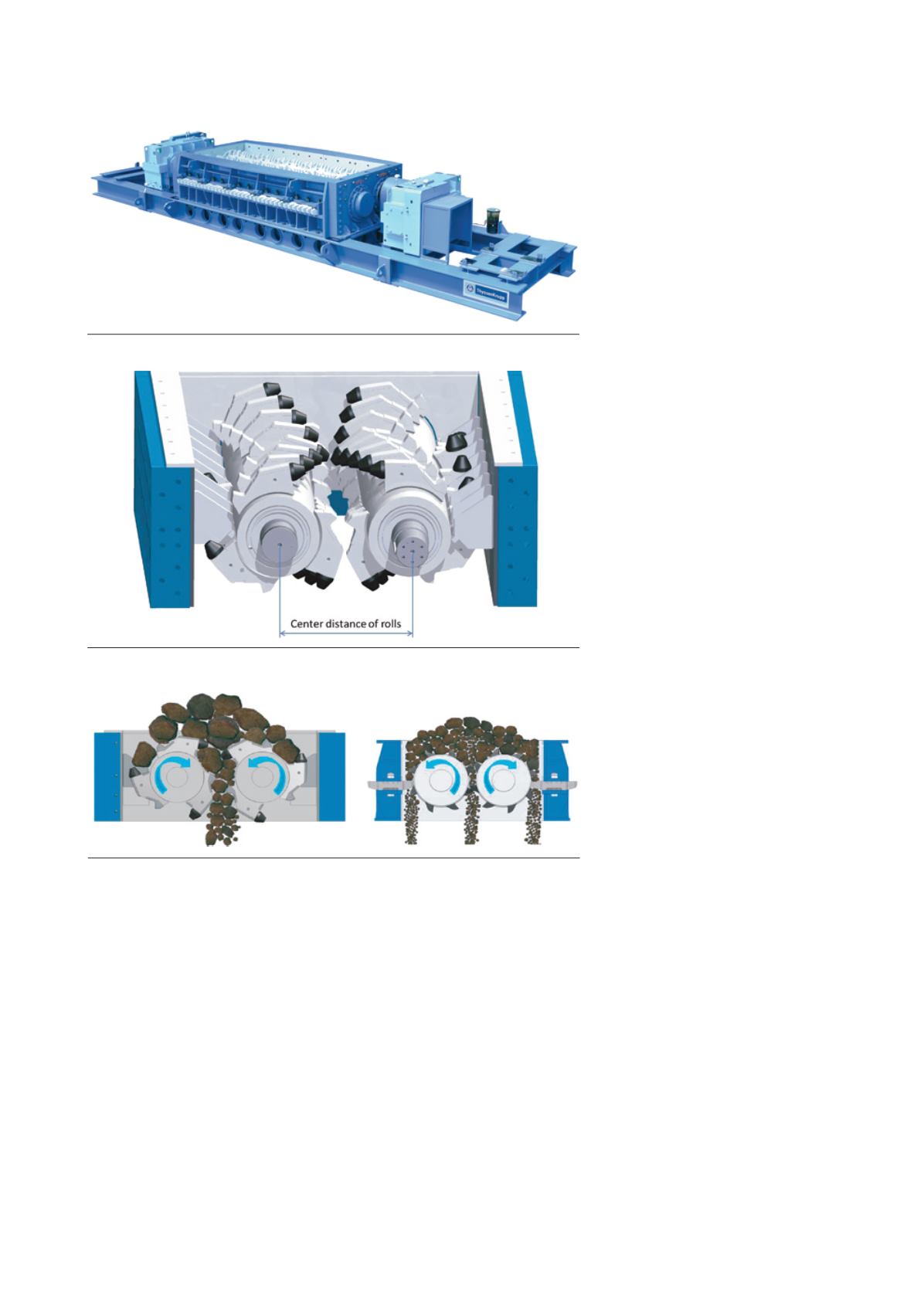
Following primary crushing, the
grain size has to be reduced further, so
that the final size of the coal meets the
requirements of its later use. If the coal
is used to feed power mills, it should
have a size between 30 mm and
100 mm, reflecting the required feed
size of the various coal pulverisers,
such as hammer mills, bowl mills or
beater wheel mills. If the coal is
produced for the world market, the
grain size should be less than 50 mm.
To ensure a high grade of flexibility,
secondary and tertiary crushers should
have the capability of producing
various product grades. A study of a
major German power supplier in
cooperation with the ThyssenKrupp
AG has shown that the grain size of the
coal after pre-crushing directly
influences the operation of the beater
wheel mills feeding the boiler of the
power plant, meaning that the
efficiency of combustion can be
increased by adjusting the product size.
In contrast to secondary and tertiary
crushers, which are usually installed in
stationary buildings, primary crushers
can be added to semi-mobile or
fully‑mobile crushing plants. The
higher CAPEX for mobile plants can be
mitigated through the lower fuel cost
for dumpers or trucks or by reducing
the length of required conveyors. This
is possible, because the distance
between the brim and the crushing
plant can be reduced by moving the
plant. Furthermore, the number of
trucks needed for the continuous
supply to the primary crusher can be
reduced by using a mobile or
semi‑mobile plant layout.
Choosing the right crushing
equipment and plant layout can be the
key to success for an efficient and
profitable coal processing concept. In
early industrial applications, the
crushing of coal and overburden was
done using double roll crushers or
hammer mills only. The technology for
coal processing has significantly
improved in the last decades and in the
1990s ThyssenKrupp RollSizers were
introduced to the market as a compact
and reliable machine for the
downsizing of various bulk materials.
Standard RollSizer for coal
crushing
The RollSizer (Figure 1) is related to
the double roll crusher: in both
machines the material is crushed
between two counter-rotating rollers.
In a double roll crusher, the material is
crushed by high compressive forces
between the fast turning rollers.
RollSizers, on the other hand, have
bigger teeth in comparison to double
roll crushers and operate at lower
circumferential speeds. This means,
that the crushing in a RollSizer is
caused by tensile and shearing forces.
These forces are generated by
sophisticated direct drive systems with
gearboxes, couplings and electric
motors, allowing the startup of
RollSizers, even under full load of a
filled crushing chamber. The RollSizer
was tailored to the particular needs of
the coal industry and gained general
approval. Beside their use in the coal
industry, RollSizers were successfully
implemented in limestone and ore
crushing plants for medium hard
material. The compact design of
RollSizers makes them suited for
underground and mobile applications,
as well as for the implementation into
existing crushing plants, e.g. in
material transfer areas.
Figure 2. Centre distance between the rollers.
Figure 3. CenterSizer and SideSizer.
Figure 1. RollSizer for coal.
44
|
World Coal
|
July 2015


